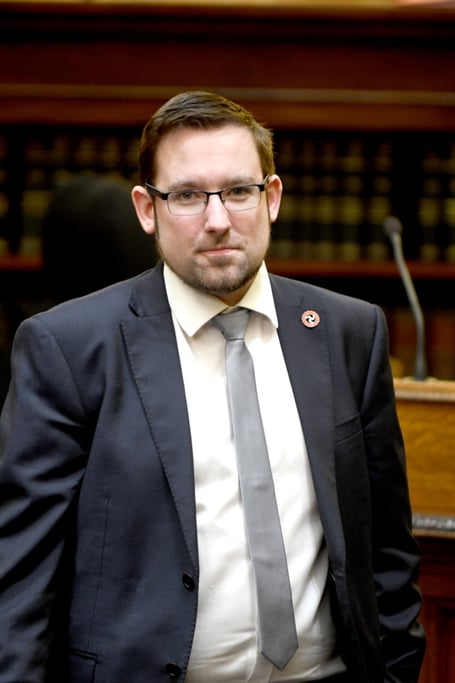The island’s health service wants to ensure patients will not wait any longer than 18 weeks from referral to treatment.
It is hoped that, through a series of measures designed to tackle the problem, this goal can be reached by the end of the current administration.
The target has been mandated by the Department of Health and Social Care to reflect the Referral to Treatment (RTT) target in the NHS Constitution.
In England, under the NHS Constitution, patients ’have the right to access certain services commissioned by NHS bodies within maximum waiting times, or for the NHS to take all reasonable steps to offer a range of suitable alternative providers if this is not possible’.
The NHS Constitution sets out that patients should wait no longer than 18 weeks from GP referral to treatment.
Speaking to the Manx Independent, Health Minister Lawrie Hooper has said that while this target was routinely missed in the UK, it was the ’gold standard’ and should be the goal for patients to experience here.
Mr Hooper said: ’We’re tasking Manx Care with working out how they would report on an 18 week waiting time.
’So 18 weeks from referral to treatment - which is the target they have in the UK.
’We’re hoping that by the end of this administration that is where we’ll be, so in the next three or four years, we’ll be down to that 18 weeks, that’s the ultimate end goal.
’Obviously, whether we get to that or not will depend on all sorts of things like funding and capacity and staffing and all the rest of it.
’But Manx Care has already taken some action this year to start tackling various parts of the waiting lists, so it’s making progress.’
The island’s extensive waiting lists have been the subject of much discussion, particuarly as they have been exacerbated by the coronavirus pandemic.
Mr Hooper said: ’I think we knew that this winter was always going to be difficult, if I’m honest, with Covid and with some of the stuff happening before Christmas with cancellations of elective procedures and that kind of thing.
’Largely they were staff related - we just didn’t have enough staff to safely run the operations, so obviously Manx Care said "if we can’t do it safely, we can’t do it", and that clearly is the right thing to do.
’You will have seen Manx Care putting out information about what they’re doing to tackle some of the waiting lists.
’They are going through pathway by pathway, looking at all the waiting lists and saying "how can we tackle some of these?"
’And some of it involves contracting with organisations to bring staff here, some of it will be about sending people across and other things.
’There will be a combination of things to see how we get the waiting lists down from where they are now to something a bit more acceptable.’
The current wait list for orthopaedic procedures (including hip and knee replacements) is about 530 people, with an average wait time of 330 days, although Mr Hooper admitted that is an average, with some being seen sooner, and some having to wait substantially longer.
halve
He said: ’I know people who have been waiting for quite a long time over that 330 odd days, but the aim by the end of the year is to halve that waiting time and actually cut down the waiting list quite substantially as well.’
In a statement, Manx Care, the body that now runs health services at arm’s length from Mr Hooper’s department, said: ’Manx Care is making progress with its plans to reduce its waiting lists across a number of clinical specialisms.
’Manx Care is in advanced talks with a number of healthcare providers who it intends will see and treat some patients on its behalf as part of the restoration and recovery programme.
’They are working with bespoke healthcare partners in relation to a number of orthopaedic assessments and operations for patients waiting for joint procedures.
’Hips and knees are complex procedures with a high level of clinical triage required.
’Options are being considered for the provision of treatment at Noble’s Hospital and at a private facility in the UK.
’Further information will be shared on this as plans progress.
’It is hoped to be in a position to announce this speciality provider within the next few weeks.’
On January 26, Manx Care announced it was making progress in reducing its waiting lists across a number of clinical specialisms.
It declared that by the end of February, it will have cleared its endoscopy waiting list, ’thanks to the focused delivery of an initiative to deliver procedures across weekend periods, utilising surplus theatre capacity’.
In a statement, it said: ’Even before the start of the Covid-19 pandemic in March 2020, healthcare waiting lists on the Isle of Man were lengthy, and with no clear plan in place to focus on reducing these. This was only exacerbated further by the pandemic.
’When Manx Care came into existence on April 1 2021, it made a commitment to reduce waiting lists across a number of clinical specialities.
’Utilising the support of a number of experienced healthcare providers to deliver a combination of both virtual consultations and treatment across some specialities will help the organisation to achieve this whilst also allowing Manx Care to transform the way that its services are delivered so that it can build a sustainable infrastructure that will future-proof the health and social care needs of the island’s population moving forward.’
options
The Health Minister reiterated that various options are being looked at to reduce wait times, saying: ’Some of the waiting lists are pretty big, they are looking to more than halve them in some areas by the end of this calendar year or financial year, as well as the waiting time - because it’s not just how many people are on the waiting list, it’s how long they’ve been waiting as well.
’The recovery and restoration programme is what they call it, but really, it’s basically a schedule of different types of things that they can do to clear those waiting lists down, and reduce the amount of time people are having to wait for operations.
’And then in the longer term, the aim is to get us down to that 18 week referral to treatment model, whereby you get referred from the GP into a surgery of some sort, and actually it’s no more than 18 weeks before you start your treatment after that referral is given.
’That’s the standard NHS target - that they don’t stick to unfortunately in the UK - but that’s their aim.’
The island’s Budget will be announced next week, and promises to shine a light on some of the ways these endeavours can be achieved.
On Tuesday (February 8), the UK’s Health Secretary Sajid Javid announced in the House of Commons that six million people are on the NHS’s waiting list for hospital treatment - one in nine of the population there - and he admitted this number would probably increase.
To tackle this, Mr Javid said the UK government would pour more money in to private hospitals to treat NHS patients.
In the Isle of Man, we will have to wait and see how the UK’s attempts to quell their waiting lists will affect us.
Mr Hooper warned: ’The UK announced what they are doing to reduce their waiting lists, and that’s going to have a big impact on what’s available.
’You know, if we’re all competing for the same Spire or Bupa or whoever it is in the UK to use their space, or to use their surgeons, it’s going to drive the price up and it’s going to make it more difficult to secure some of the capacity that we need.
’So there are a lot of moving parts, but everything for us at least looks like it’s moving in the right direction.’

.jpg?width=209&height=140&crop=209:145,smart&quality=75)
.jpeg?width=209&height=140&crop=209:145,smart&quality=75)

.png?width=209&height=140&crop=209:145,smart&quality=75)
Comments
This article has no comments yet. Be the first to leave a comment.